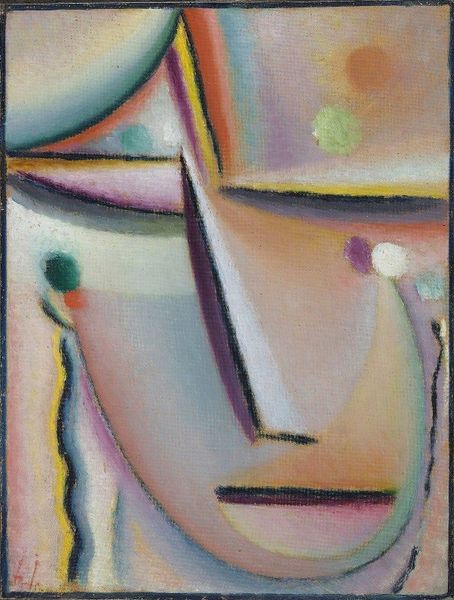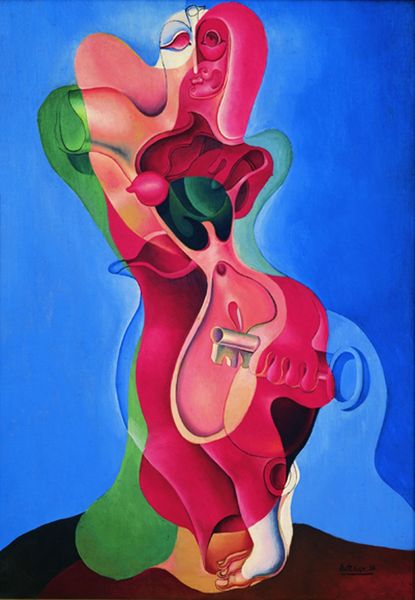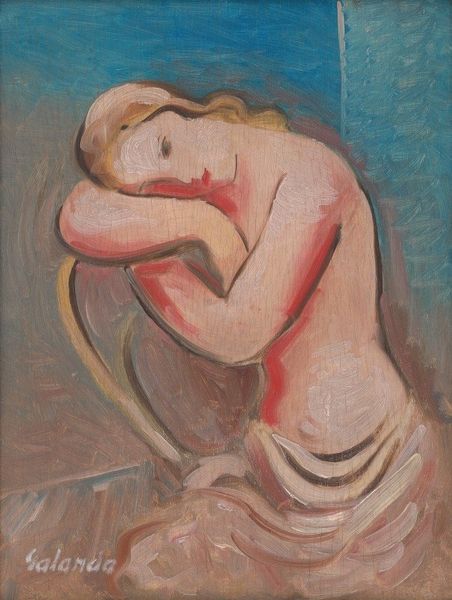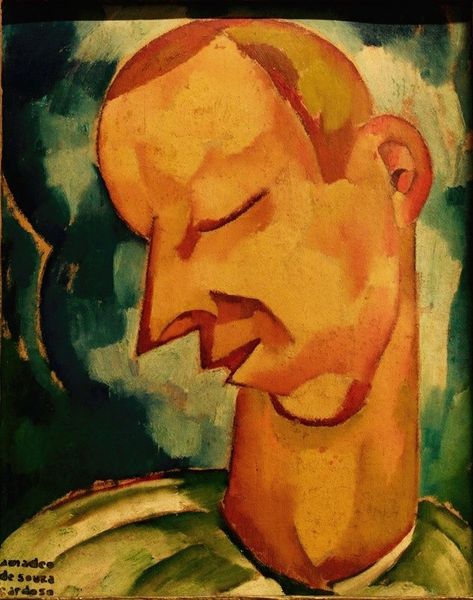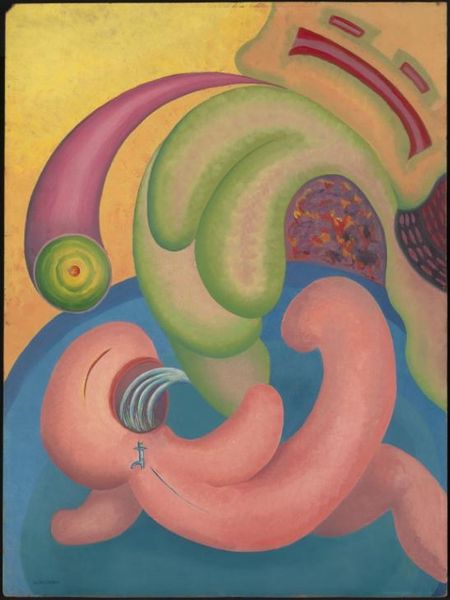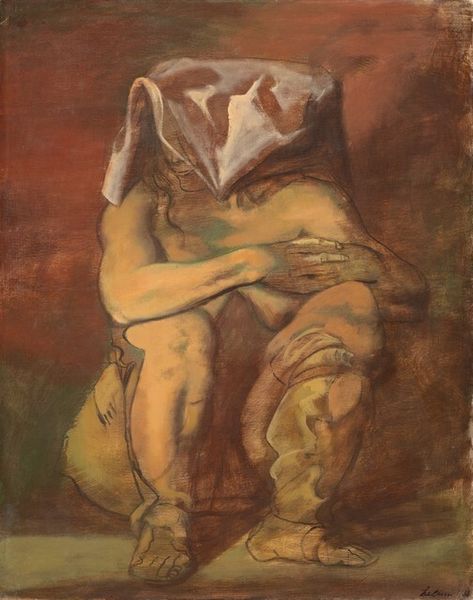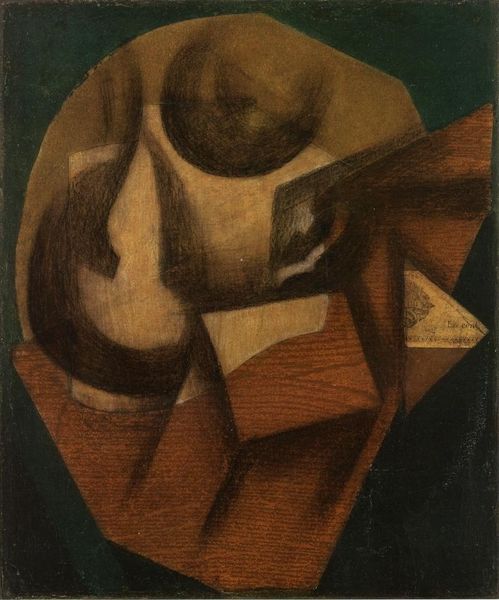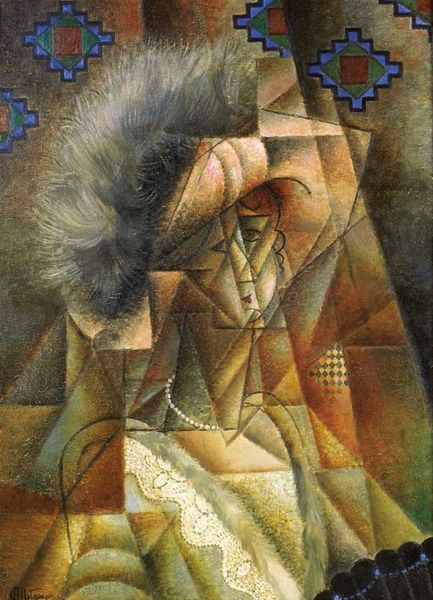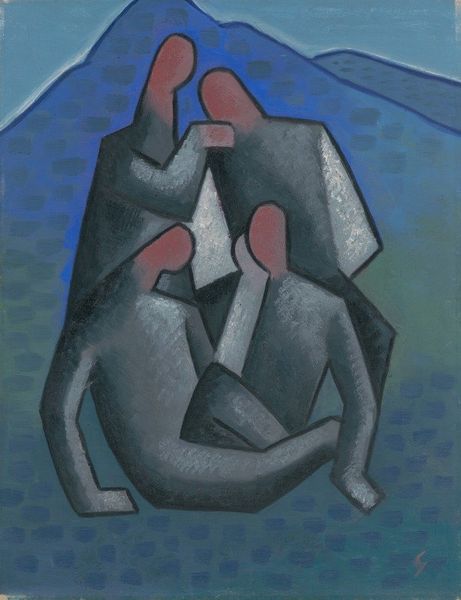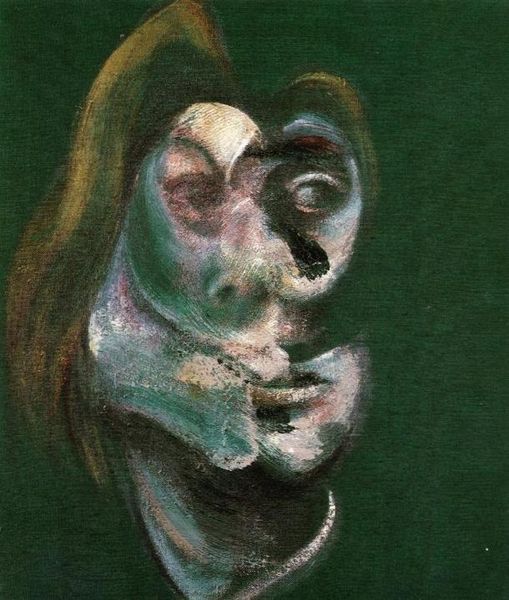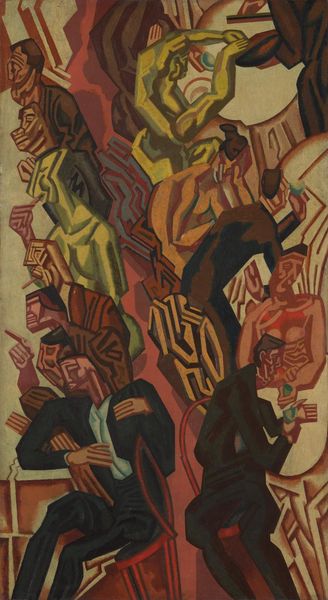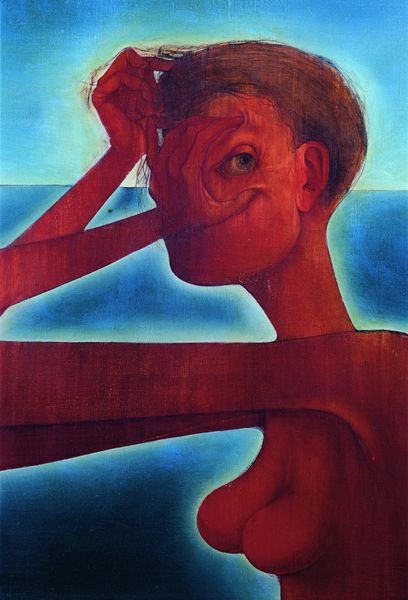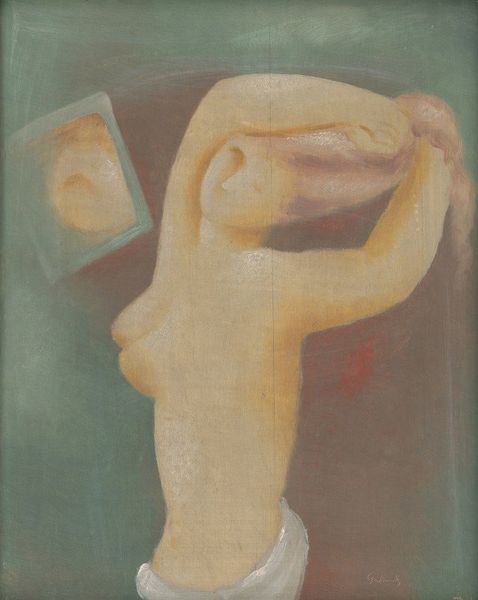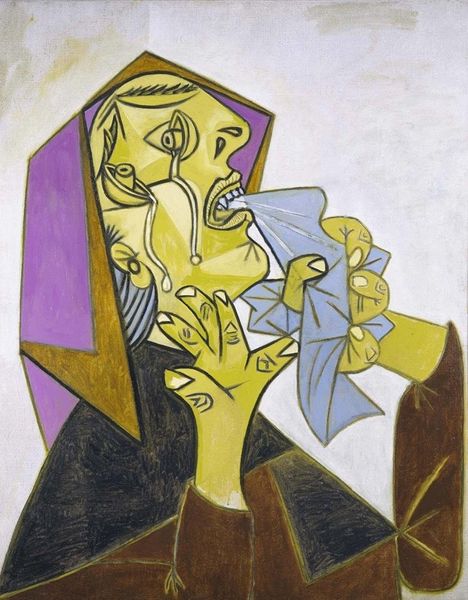
Copyright: Judy Chicago,Fair Use
Curator: Judy Chicago’s 1984 painting, “Power Headache,” now residing at the Brooklyn Museum, is a potent example of her exploration into gendered experiences through symbolic form. It's rendered in oil paint with striking figuration and an expressive flair. Editor: My first impression is one of intense discomfort. The tight cropping of the face, the muted but sickly color palette—it all evokes a feeling of suppressed agony, almost claustrophobic. The exaggerated lines give it a surreal quality. Curator: That sensation is deliberate. Chicago's work frequently engages with the often-unacknowledged pain and pressure women experience in patriarchal systems. The tension in the muscles of the face, the drooping eyelids, seem to visually communicate a psychological burden. Editor: Indeed. The composition is incredibly effective in conveying this. I’m particularly struck by the linear element resembling tree roots extending from the head, echoing the “Power Headache” painted in crude letters over the subject. It's as if this tension is deeply embedded. This structural arrangement gives it the expressionistic style and mood I feel so palpably. Curator: Exactly. It reflects an emotional state physically manifesting. This notion of internalized conflict exploding outward is a recurring theme in her artistic statements during the 1980s when this was conceived, an era marked by debates surrounding women’s roles and identity. The piece thus goes beyond an individual ailment. It's an iconographical statement about societal expectations, if you allow for the cultural reference. Editor: The title becomes a very clever semiotic pointer, then, redirecting our interpretation from physical pain to social ailment. It pushes us to understand the piece beyond surface aesthetics, it really engages us in understanding a world beyond our personal senses, in understanding others and their stories. I agree, this really goes beyond. Curator: It's intriguing how such a seemingly simple composition can elicit such a complex, layered reading of the intersectionality between form, socio-politics, and cultural consciousness, wouldn’t you say? Editor: Definitely food for thought! I can only concur that through its artistic choices, Judy Chicago creates a thought-provoking discourse, inviting us to acknowledge what lies hidden beneath the veneer of ordinary existence.
Comments
No comments
Be the first to comment and join the conversation on the ultimate creative platform.
